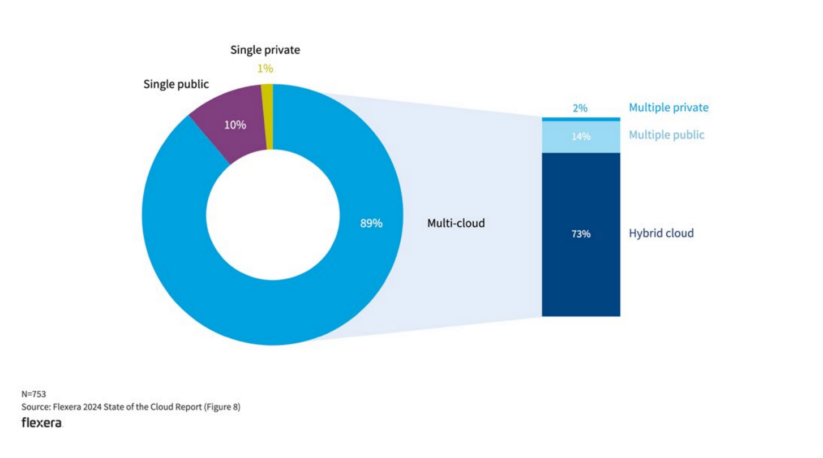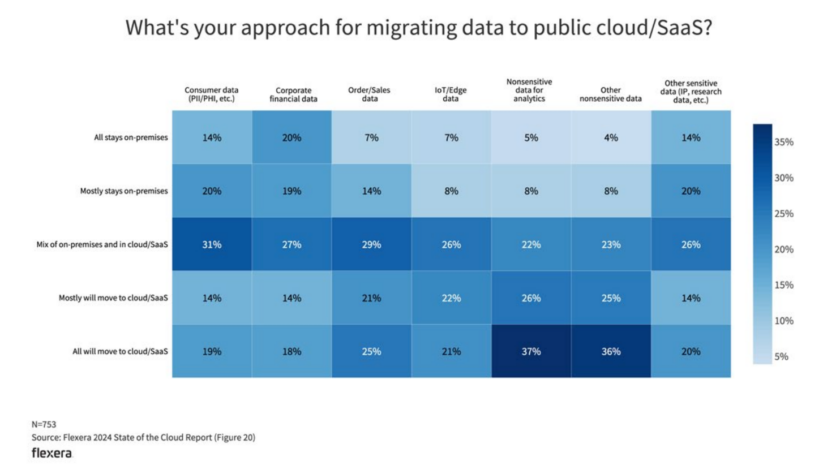It’s nearing the end of the summer in North America, and one report has been a staple on my reading list for more than a decade: the Flexera State of the Cloud Report. The annual survey of hundreds of global IT decision makers assesses cloud strategies, migration trends, and important considerations for companies moving to the cloud or managing cloud environments. As a long-running report, it’s also a valuable resource for understanding the evolution of cloud strategies and priorities over time, with trend data that shows how strategies and priorities have also evolved over time. I’ve referenced the latest iteration of the report dozens of times since its inception.
The 2024 edition of the Flexera State of the Cloud report was released in March and, as usual, it serves as a fantastic resource for data, analytics, and AI leaders as they consider the infrastructure and platform options for their architecture. Here are a few key takeaways from the report:
Managing Cloud Spend Remains a top Challenge – Even Overtaking Security

One of the biggest surprises of the 2023 report was that managing cloud spend overtook security as the top challenge for organizations for the first time in 11 years. Cloud spend remained on top for the second year in a row, with public cloud spend exceeding budgets by an average of 15%. The economic uncertainty that many companies have faced in the past two years has exacerbated cost overruns, and most data teams should expect greater scrutiny over their public cloud consumption.
There are two ways to combat the high costs of public clouds. The first is to architect for hybrid deployments. The cloud is ideal for workloads with intermittent or burst capacity requirements, like training AI models. But companies can save money by running other workloads with predictable resource requirements on-premises. The other way is to be strategic about where and when to leverage SaaS platforms, which take control over workload tuning and resource allocation out of the user’s hands in favor of ease of use. That trade-off is not always necessary or ideal.
Increased Adoption of Multi-Cloud Strategies

Multi-cloud strategies continue to dominate. 89% of respondents report using multiple clouds, up from 87% in 2023. The dominance of multi-cloud is the result of the increased parity in functionality and ecosystems between the hyperscalers, as well as the desire to avoid lock-in with any individual cloud provider.
Data teams operating in multi-cloud environments must make some critical architectural decisions. The first is to leverage open formats, including Apache Parquet at the file level and Apache Iceberg at the table level, to ensure that data is both transferable between clouds and interoperable with a wide range of tools for different use cases. The second and perhaps the most critical component of multi-cloud architectures is unified security and governance across the entire data estate, so sensitive data is always protected and data consumers have access to a consistent and accurate view of the data wherever it lives.
A Lot of Data Will Remain On-Premises

Many organizations still prefer to keep sensitive data on-premises, including consumer data, corporate financial data intellectual property, research data, and more, while the majority of non-sensitive data is destined for the public cloud. This result is intuitive for anyone who has spent time talking to customers in highly regulated industries like banking and healthcare, but it can serve as a healthy sanity check for customers who are feeling pressure to migrate. The reality is that, despite a lot of cloud hype, less than 20% of all companies who participated in the survey plan to move their sensitive data to the cloud.
Cloudera Customers Have an Advantage
The good news for Cloudera customers, as they consider their cloud strategy, is that it doesn’t really matter whether they plan to migrate sensitive data to a public cloud or leave it on-premises. As the only true hybrid platform for data, analytics, and AI, Cloudera enables customers to freely choose any infrastructure for their data analytics workloads, and that data remains in open formats and available for a wide range of workloads, from data engineering to Business Intelligence to AI and ML. It’s portable, meaning that if infrastructure requirements change, it’s easy to move. It’s interoperable, so data teams and data consumers can choose the best tool or execution engine on a workload-by-workload basis. And it’s protected by a unified governance and security solution, so customers can rest assured that whether their data is in the cloud or on-premises, it’s safe and accessible only by the right users.
Try Cloudera Today
Cloudera is available for AWS customers to try today. Deploy one of three use case patterns and get your hands on the platform that can dramatically simplify and accelerate your cloud journey.



